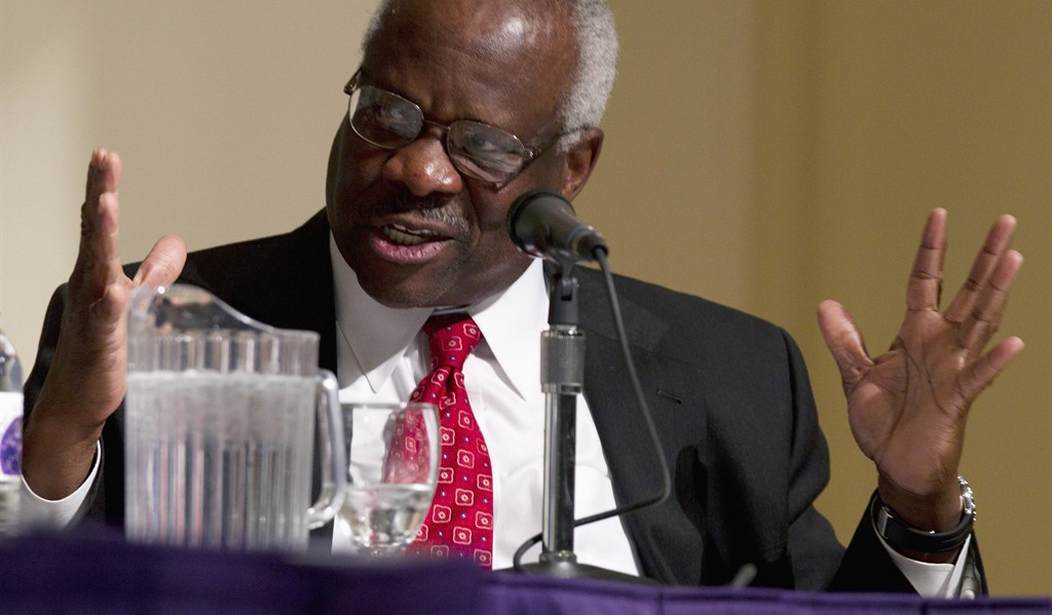So much for the idea of treating the 2nd Amendment like access to alcohol. A federal judge struck down a Texas law that restricted public carry to adults 21 years of age or older, ruling it unconstitutional as well as un-historical:
A federal judge has ruled that a Texas law that bans people ages 18 to 20 from carrying handguns in public is unconstitutional, saying the restriction is inconsistent with the Second Amendment and US history.
The decision follows a transformational Supreme Court ruling in June which significantly expanded gun owners’ rights to carry firearms outside the home and raised the threshold that authorities must meet when defending gun restrictions.
District Court Judge Mark Pittman stated that the Texas restriction on “law-abiding 18-to-20-year-olds” is inconsistent with the Constitution because the Second Amendment itself does not state an age restriction, and minors were part of state militias that existed in the formative years of American history.
This may be one of the first cases that use the Bruen decision as a basis for its outcome. Pittman’s ruling explicitly relies on Bruen to dispense with the previous “two step” framework and “means-end” scrutiny that courts used before Bruen. Instead, Pittman uses Justice Clarence Thomas’ framework of the 2nd Amendment text and historical background to determine whether 18-20-year-olds are protected under its umbrella.
They are, on both points, Pittman writes:
To start, the Second Amendment does not mention any sort of age restriction. This absence is notable—when the Framers meant to impose age restrictions, they did so expressly. See, e.g., U.S. CONST. art. I, § 2 (age 25 for the House of Representatives); id. art. I, § 3 (age 30 for the Senate); id. art. II, § 1 (age 35 for the President). Instead, the Second Amendment refers only to “the people,” which various Founding-Era dictionaries define as a reference to those who make up the “national community.” See United States v. Jimenez-Shilon, 34 F.4th 1042, 104445 (11th Cir. 2022) (quoting Noah Webster, American Dictionary of the English Language 600 (1st ed. 1828) (“The body of persons who compose a community, town, city, or nation.”)); see also 2 Samuel Johnson, A Dictionary of the English Language 305 (6th ed. 1785) (“A nation; those who compose a community.”)).
In accord with that understanding, Heller said that “the people” is a term of art that refers to “all members of the political community, not an unspecified subset.” …
With this guidance, the Court asks a simple question: are lawabiding 18-to-20-year-olds properly considered members of the political community and a part of the national community? The answer is yes. And based on that answer, the Court concludes that law-abiding 18-to20-year-olds are a part of “the people” referenced in the Second Amendment. This conclusion is unsurprising: Heller stated that the “Second Amendment right is exercised individually and belongs to all Americans.” Heller, 554 U.S. at 581 (emphasis added).
Pittman also draws a potent analogy to other Bill of Rights amendments. Can the federal and state governments similarly denigrate the other civil rights of Americans between 18 and 20 years of age? Clearly not, Pittman points out:
On this point, the First Amendment has been interpreted to apply to all persons, even those under the age of 18. See, e.g., Tinker v. Des Moines Indep. Cmty. Sch. Dist., 393 U.S. 503, 506 (1969) (free speech); see also W. Va. State Bd. of Educ. v. Barnette, 319 U.S. 624, 642 (1943) (free exercise). And while the First Amendment is limited in some contexts (such as the forum or content of the speech), age does not serve as a basis for eradicating the right. See Tinker, 393 U.S. at 506 (“First Amendment rights, applied in light of the special characteristics of the school environment, are available to teachers and students. It can hardly be argued that either students or teachers shed their constitutional rights to freedom of speech or expression at the schoolhouse gate.”).
The Fourth Amendment likewise protects individuals regardless of age. See New Jersey v. T.L.O., 469 U.S. 325, 334 (1985). To be sure, the context of a search—e.g., whether on or off school property—can affect the expectations of privacy. Id. at 337–40. But the expectation of privacy is not affected based on the age of the person being searched. Rather, the context of a search is the distinguishing factor. See id. …
Beyond the First and Fourth Amendments, other constitutional provisions, which do not specifically mention “the people,” support the Court’s conclusion that “the people” protected by the Second Amendment include 18-to-20-year-olds. On this point, neither the Fifth Amendment nor the Fourteenth Amendment exclude—or have been interpreted to exclude—18-to-20-year-olds. See, e.g., Fisher v. Univ. of Tex., 136 S. Ct. 2198, 2210 (2016) (equal protection); Goss v. Lopez, 419 U.S. 565, 574 (1975) (due process); Kent v. Dulles, 357 U.S. 57, 65–66 (1958) (travel); Brown v. Bd. of Educ., 347 U.S. 483, 493 (1954) (equal educational opportunities). Likewise, in the Eighth Amendment context, the Supreme Court has said that where “a line must be drawn,” “[t]he age of 18 is the point where society draws the line for many purposes between childhood and adulthood.” Roper v. Simmons, 543 U.S. 551, 574 (2005).3 The Court continues this line of interpretation and concludes that 18-to-20-year-olds are protected by the Second Amendment.
If that’s the case, then the Constitution can’t allow age restrictions to apply to the 2nd Amendment either, Pittman ruled.
So far, this decision doesn’t have any precedential weight, although it keeps the state of Texas from enforcing this law. If this gets upheld in appellate courts, though, it will start having a more significant impact. It would likely take a Supreme Court action upholding Pittman’s ruling to discourage New York’s new rule restricting certain firearms sales to people 21 and older, but a Fifth Circuit endorsement of Pittman might make other states think twice about trying it on their own. At the time, I questioned whether states could apply age restrictions to enumerated constitutional rights, and Pittman answered that question directly here.
I’d expect other courts to reach similar conclusions, especially in light of signals sent by the Supreme Court in June about the potential reach of Bruen. There simply is no constitutional or precedential argument for restricting enumerated civil rights for adults on the basis of age, no matter how hard policymakers and activists try to dream them up.








Join the conversation as a VIP Member